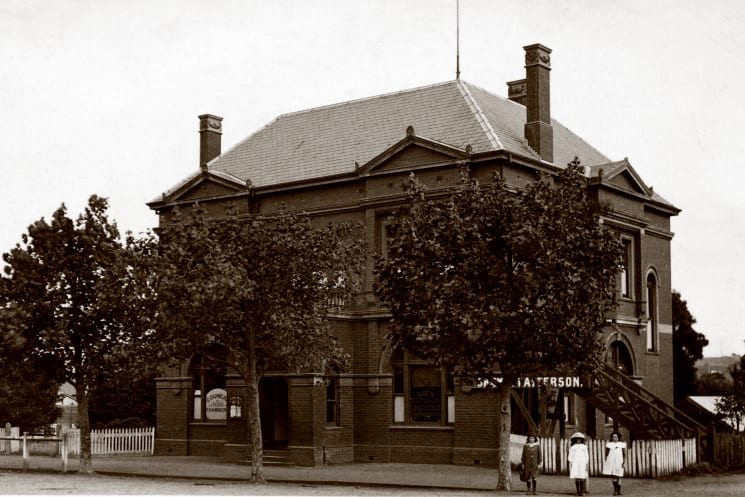
A photograph of the Warragul Shire Hall built using Longwarry bricks.
The building, still standing today in Queen St, was opened in 1892.
The arrival of the railway from Oakleigh to Moe around 1877 made a huge difference in the establishment of Longwarry.
Still only Crown land, Donald Fraser moved his sawmill business to what is now the corner of Witton St and Drouin-Longwarry Rd in 1883.
The Longwarry pastoral lease established cattle yards on the south side of the railway line, opposite what is now Boxshall Rd. Edwin Witton established a brickworks on what is now the Longwarry Food Park site in 1884.
All of this activity prompted the railways department to build a siding for the loading and transport of the timber, beef and bricks.
The only condition was that Witton had to be able to produce at least 50,000 bricks per month.
Witton was very confident this would be easy to achieve, having just installed a new machine which could easily produce that number.
The Longwarry bricks were very popular with builders as they were generally free from sand and impregnated with an unusual amount of quartz.
The quartz content gave the bricks extra strength and a slightly different look, as they seemed to sparkle in the sunlight and made them very distinctive. Even today, buildings with Longwarry bricks often have that sparkle still evident.
The clay was dug on site and was between 45cm and 60cm from the surface. It was estimated to go down about 15 metres.
Many older Longwarry residents will recall the "factory dam" at the rear of the factory buildings, which was the original clay pit.
With the provision of the rail siding and further development of the works, including two drying sheds roofed with iron and shingles that were both more than 45 metres in length, Witton told the local paper he was confident of producing 100,000 bricks per week if under pressure.
This was necessary, he said, as he had recently secured a contract to provide 250,000 bricks.
Today, there are still many buildings and homes throughout the district that were built with Longwarry bricks.
Information courtesy of the Longwarry and District History Group and photograph courtesy of Warragul and District Historical Society.
The history group is dedicated to the history of Longwarry and all areas in the 3816 postcode, including Labertouche, Longwarry North and Modella. Visit longwarryhistory.org to find out more.





